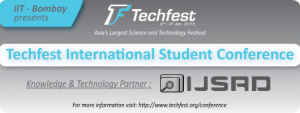#IJSRD #CALLFORPAPER
Volume 7 | Issue 2 April 2K19
#Leading E-Journal in Engineering & Science
#High Impact Factor
Now, a dedicated lifetime online space for science research scholars to share their work globally. IJSRD is an India's leading open access e-journal for all kinds of science, engineering & technologies manuscript. We publish original and high quality papers.
e-ISSN : 2321 - 0613
| |||||||||
International Journal for Scientific Research & Development
| |||||||||
Impact Factor : 2.38
| |||||||||
VOLUME 3 | ISSUE 8 | OCTOBER 2015
| |||||||||
IJSRD is a leading e-journal, under which we are encouraging and exploring newer ideas of current trends in Engineering and Science by publishing papers containing pure knowledge. IJSRD is Trusted by more than 25000satisfied authors worldwide & growing rapidly.
|
Last Date for Paper Submission
| ||||||||
25
| |||||||||
It is our immense pleasure to invite you to submit manuscript/paper of your research/review/study in any engineering research area for publication upcoming issue of our popular journal IJSRD .
|
October 2015
| ||||||||
Publication Charges
| |||||||||
Benefits of Authors
|
750 INR
| ||||||||
|
100$
| ||||||||
Please contact us for Conference Paper Publication
| |||||||||
| |||||||||||||||||||||||||||||| | |||||||||
IJSRD - International Journal for Scientific Research & Development , India
| |||||||||
Phone : 8866191212 / 22 | E-mail : info@ijsrd.com | Website : www.ijsrd.com
| |||||||||
 Techfest International Student Conference is an initiative to bring together the student community and professors with a common research background. TISC marks a step further in our endeavor to promote science and technology among the students by facilitating the exchange of knowledge between academia and industry.
Techfest International Student Conference is an initiative to bring together the student community and professors with a common research background. TISC marks a step further in our endeavor to promote science and technology among the students by facilitating the exchange of knowledge between academia and industry. Techfest International Student Conference presents a unique opportunity for students to present their work in front of fellow students, senior professors from top universities, industrialists and policy-makers. It aims at giving recognition to students for their research at a relatively young age. An enriching experience to research oriented minds, TISC will give young scientists an insight into the topic, learn new ideas and build networks beneficial for the future.
Techfest International Student Conference presents a unique opportunity for students to present their work in front of fellow students, senior professors from top universities, industrialists and policy-makers. It aims at giving recognition to students for their research at a relatively young age. An enriching experience to research oriented minds, TISC will give young scientists an insight into the topic, learn new ideas and build networks beneficial for the future.